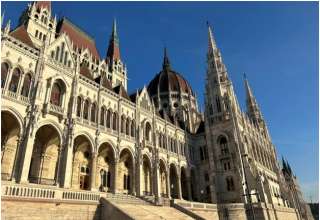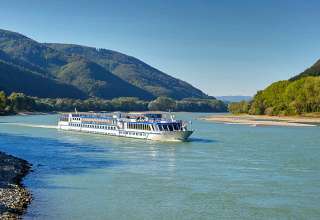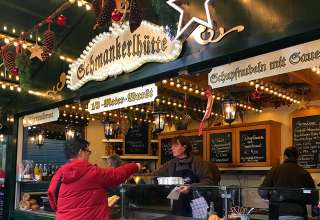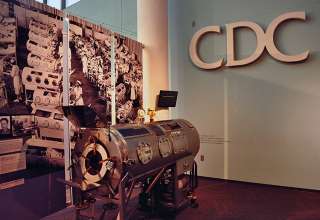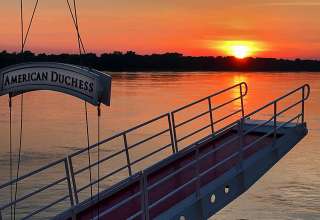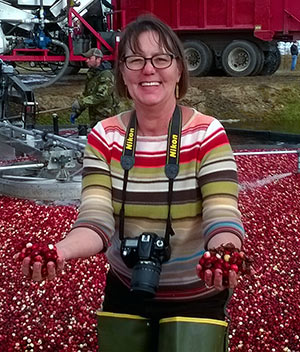Ten of us sat around a kitchen table in a tidy home in eastern Croatia. Over cake and coffee, our hostess answered questions about life in villages still reeling from the effects of a war that ended on paper more than two decades ago.
Fields still laced with land mines. Rampant unemployment. Young people fleeing to bigger cities to find a better life. Suzi Petrijevcanin wasn’t complaining, just telling it like it is to passengers on Viking River Cruises who’d booked a visit to her home as part of their shore excursion.
“We call you the boat people,” she laughs.
The Lower Danube flows through Eastern Europe’s former Communist countries. Bookended by beauty spots in Budapest and Bucharest, the stretch of river is short on fairy-tale castles and romantic vistas, long on buildings pockmarked by bullet holes, ugly Communist-era housing projects, monstrous people palaces built by egomaniacal tyrants.
Passengers who book this itinerary tend to have an intellectual bent; well-traveled lifelong learners who’ve been to other countries in Europe and want to satisfy their curiosity about this part of the world. Eastern Europe’s complicated history unravels in on-board lectures, walking tours, motor coach excursions and visits to the homes of people like Suzi.
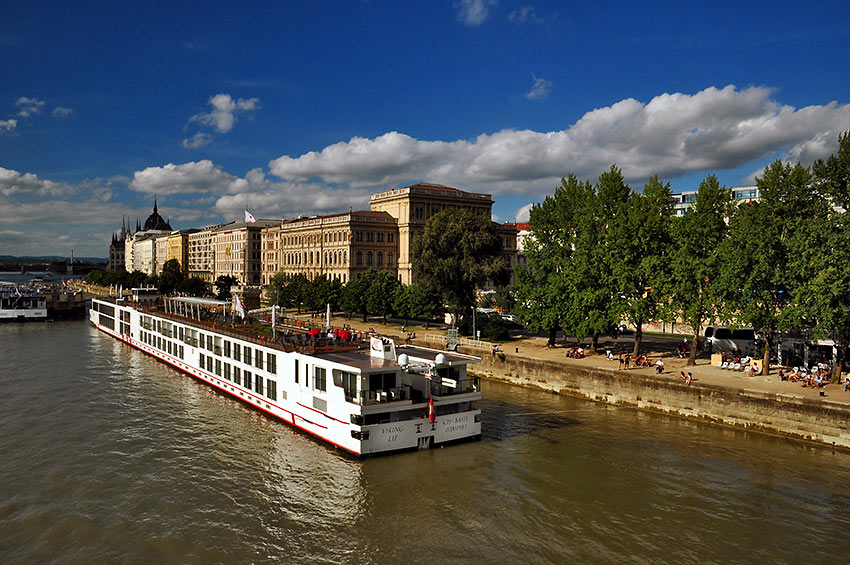
Viking’s Eastern Europe itinerary takes in Croatia and Serbia — formerly parts of Yugoslavia — as well as Hungary, Bulgaria and Romania, once all but closed to the West by the Iron Curtain. It combines a cruise on the Lower Danube with nights in upscale hotels before and after. My ship, the Lif, served as a comfortable base for exploring present-day life in the countries of Eastern Europe as it relates to their dark history.
City and Country Life in Hungary
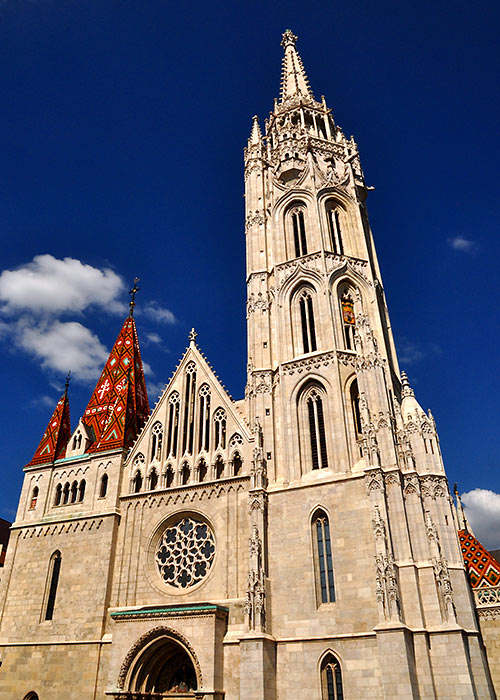
The Danube divides Buda and Pest, two sections of the Hungarian capital. We began in Buda with a walking tour around Trinity Square and gothic Matthias Church with its eye-catching Zsolnay tile roof. Behind it the white turrets of Fisherman’s Bastion rise above the Danube. Named for the fishermen who defended this stretch of the city walls in medieval times, it now serves as a viewing terrace.
From this perch, we had a great view of the Pest side of the city and the massive neo-gothic Parliament building reflected in the river. A funicular leads down to the riverfront and the Chain Bridge, the oldest of Budapest’s seven spans. Damaged by the Nazis, the unusual suspension bridge was rebuilt in its 1840 design, though enlarged for vehicle traffic.
Crossing over to the Pest side, we came to one of the most haunting displays of the city’s tragic history: row after row of shoes, replicated in bronze, lining the riverfront. This sculpture, “Shoes on the Danube,” memorializes Jews forced to remove their footwear here before they were executed by fascists, their bodies dumped in the river. Visitors place stones and flowers in the shoes, silently snapping photos.
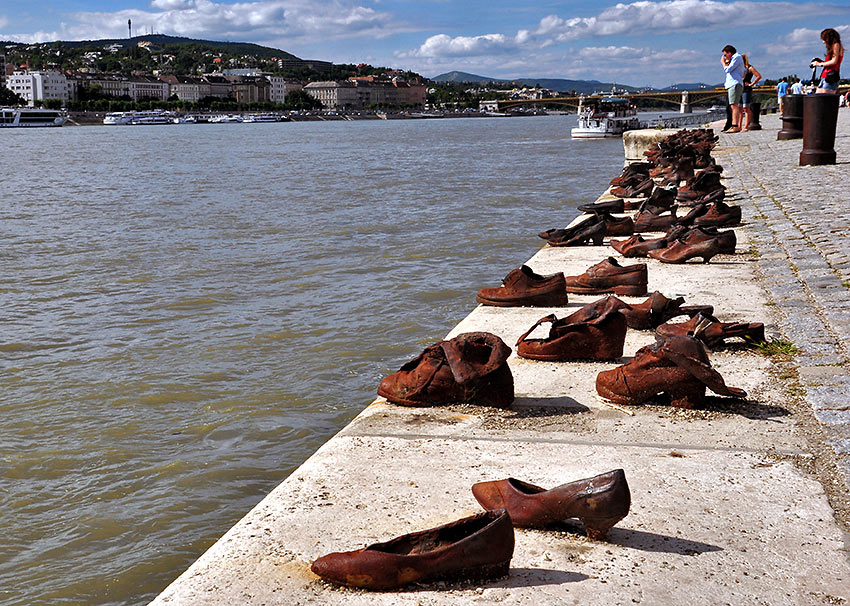
During World War II, more than 80 percent of the city’s buildings were damaged before forces of the Soviet Union pushed out the Nazis. Then, in 1956, the Soviets crushed a revolt, sending 40,000 Hungarians to camps for “re-education.” Another 300,000 fled the country.
Cruise passengers have several opportunities to visit the Hungarian countryside. Godollo Royal Palace and Gardens, largest palace in Hungary, lies just 40 minutes from the capital. An excursion to a farm and equestrian show taught us about Hungary’s tradition of horsemanship that began when nomadic warriors thundered across the steppes from Asia.
Conflict Between Croats and Serbs
Tour guides in Croatia and Serbia, home visits and on-board lectures help passengers wrap their heads around the complicated struggles between Croats, who are mostly Catholic, and Serbs, mostly Eastern Orthodox. But the conflict isn’t so much over religion as it is over territory and resentments rooted in struggles centuries old.
En route to Suzi’s house in Croatia, our tour guide took us through the Danube port of Vukovar, 90 percent destroyed in the 1990s during what Croatia calls the Homeland War (in Serbia it’s the Civil War). It started when Croatia declared independence from Serbian majority Yugoslavia. In Vukovar, more than 200 Croats who had taken refuge in a hospital were executed.
After listening to such tales of inhumanity, it was a comfort to sit in Suzi’s warm home and talk about life in Croatia today. While western Croatia thrives from tourism along the Adriatic Coast, eastern Croatia along the Danube still struggles. Once the nation’s breadbasket, Suzi said landmines left over from the war make tilling the fertile soil a challenge.
We learn the Serbian side of the story in Belgrade, capital of Serbia. Unlike most of Eastern Europe, Serbia does not belong to the European Union so has not benefited from its economic assistance. Ugly Soviet-era apartment buildings blight the skyline. Other buildings still bear bombed-out walls.
Our tour guide gave us an overview of Serbian conflicts. A Serbian nationalist assassinated an Austro-Hungarian archduke, causing Austria to declare war on Serbia and starting World War I. During World War II, Josip Broz Tito led Yugoslav guerrillas, and later became leader of the Socialist Federal Republic of Yugoslavia, holding together a coalition of non-aligned nations during the Cold War. The breakup of Yugoslavia began after his death in 1980.
But as in Croatia, Serbia’s struggles began much earlier. Situated at the confluence of the Danube and Sawa rivers, Belgrade is at the crossroads of Eastern and Western Europe and has been destroyed and rebuilt 20 times.
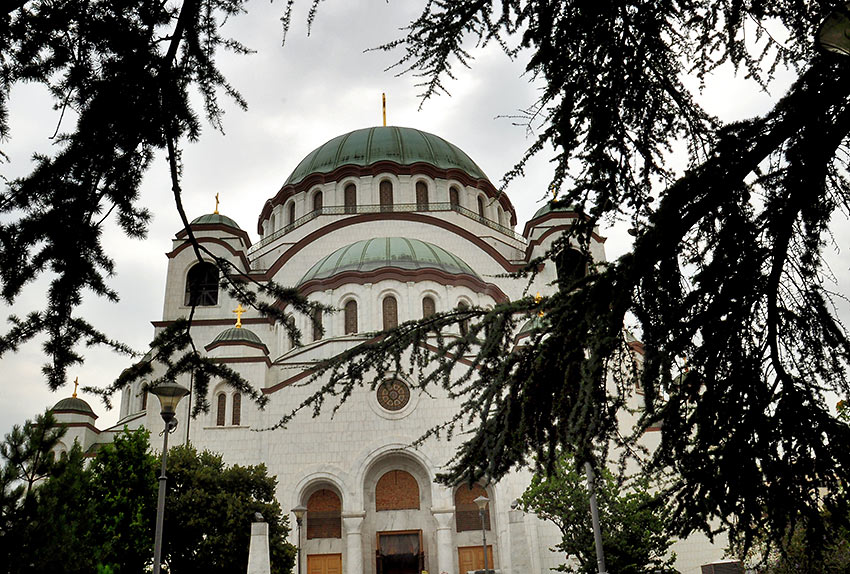
A bright spot in Belgrade is the Church of St. Sava, one of the largest Orthodox churches in the world. Begun in 1935, construction halted during World War II and under Communism. Work resumed in the 1980s, with funds largely from Serbians living abroad. Inside under its 100-foot diameter dome, visitors learn some of the practices of the Serbian Orthodox religion: only human voices are allowed (chants, no organ), the altar must face east, worshippers stand (no pews) during services and the church follows the Julian calendar so Christmas comes on January 7.
Iron Gates to Bulgaria and Romania
The Danube continues east toward the Black Sea passing through the Iron Gates, a gorge between Romania on the north, Serbia on the south.
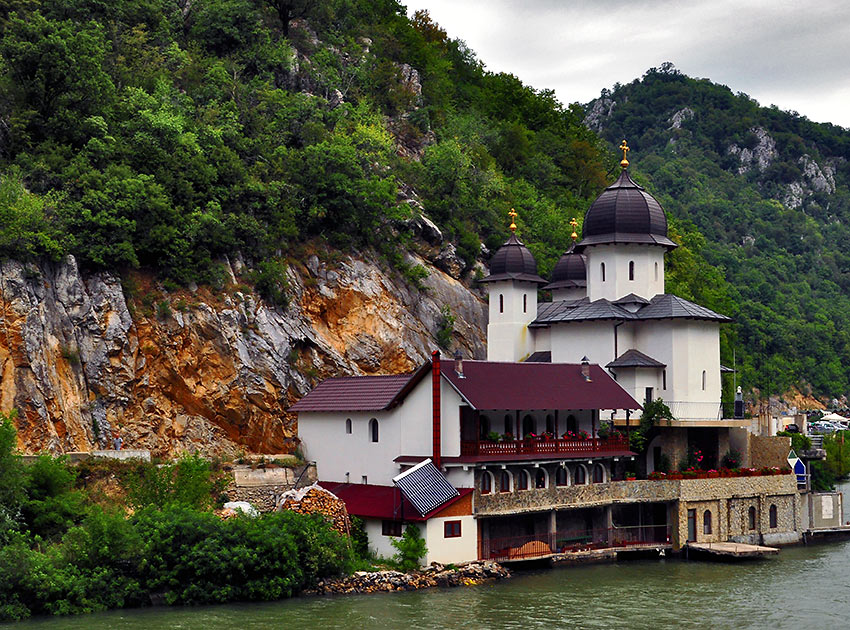
We pass an onion-domed monastery, now a convent, poking from shore. On the public address system, our cruise director tells us to watch for a nun on the balcony. If she waves to a passenger, legend has it the passenger will find enduring love within a year. A woman veiled in black appears, raising a hand in greeting.
A few minutes later we cruise by a Mount Rushmore-like head of King Decebalus who battled the Romans for freedom for what is now Romania. Carved into the limestone cliffs, it measures more than 140 feet high.
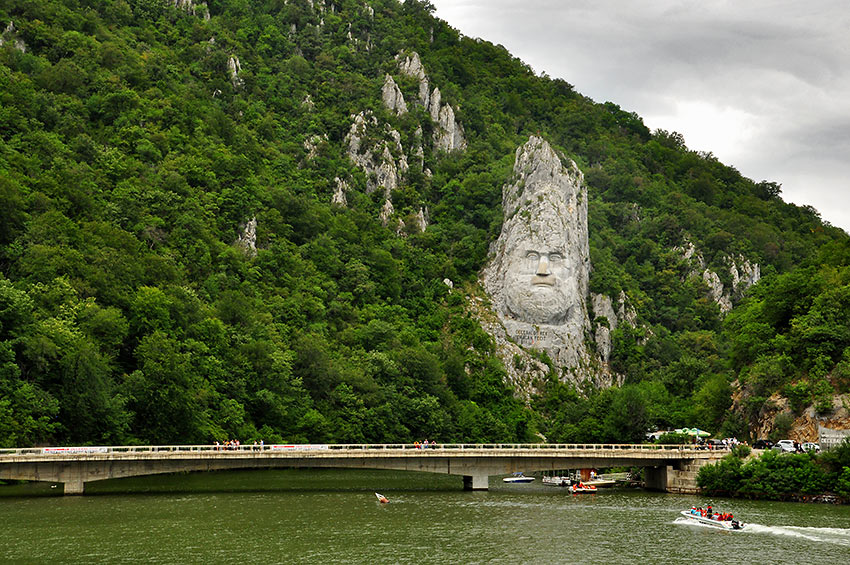
We journey through a lock and dam and the Danube widens. Kayakers skim the surface and fishermen cast lines into the river. Cottages and campgrounds line the shore where people are picnicking and sunbathing on beaches. The red-tile roofs of villages add color to the riverbank. A plume of smoke from a tractor rises from a field.
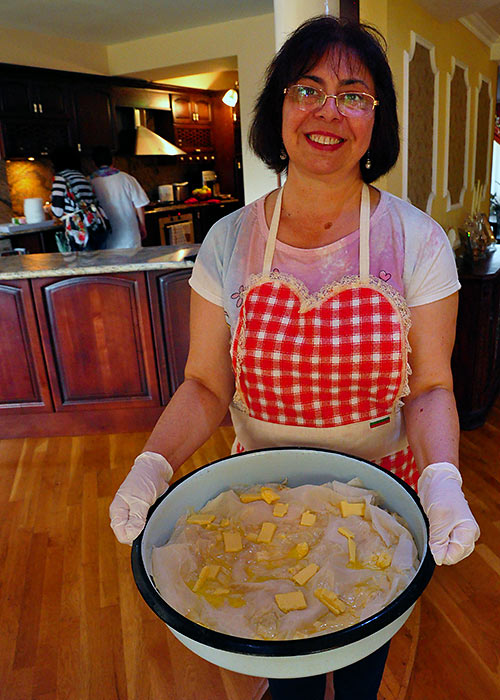
In Vidin, Bulgaria, passengers make another home visit, this time to learn how to make banitsa, a pastry that’s a staple in every household. Ramona Mihaylova lays out bowls and pans on the granite countertop in the kitchen of her modern home, which could have been plucked from the suburbs of Cincinnati where she and her husband lived for many years before she retired from teaching and they returned to their homeland.
On our last morning on the river, we boarded a motor coach for Bucharest, capital of Romania and “Paris of the East” for its wide boulevards, parks and mix of architecture styles and grand monuments, including an Arch of Triumph.
The night before, our cruise director gave us his story of life in Bucharest under Communist dictator Nicolae Ceausescu. He told us he grew up with anti-Western propaganda meant to explain away harsh economic conditions. Teachers told him blue jeans cause skin cancer and the Western diet was unhealthy, all while food shortages were rampant. Electricity was shut down for an hour every night and apartments could not be heated to more than 57 degrees.
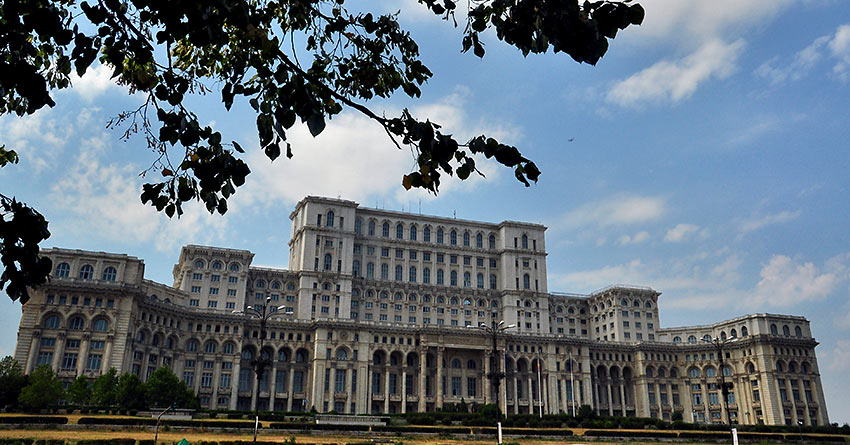
We saw the main reason for these restrictions when we toured the Palace of Parliament, a permanent example of Ceausescu’s megalomania. He bankrupted his country to build this ostentatious people palace, the biggest administration building in the world after the Pentagon. Covering nearly 4 million square feet, marble-clad rooms drip with gold leaf. Our one-hour tour covered just 3 percent of them.
Ceausescu never got to enjoy his palace. Before it was completed, a wave of revolutions swept across Eastern Europe in 1989. In December that year, Romania’s military sided with protesters, arrested the tyrant who, after a quick trial, was executed on Christmas Day.
A few months later the Berlin Wall came down in Germany.
The Iron Curtain had fallen.
For further information, visit Viking River Cruises or call, 800-706-1483
